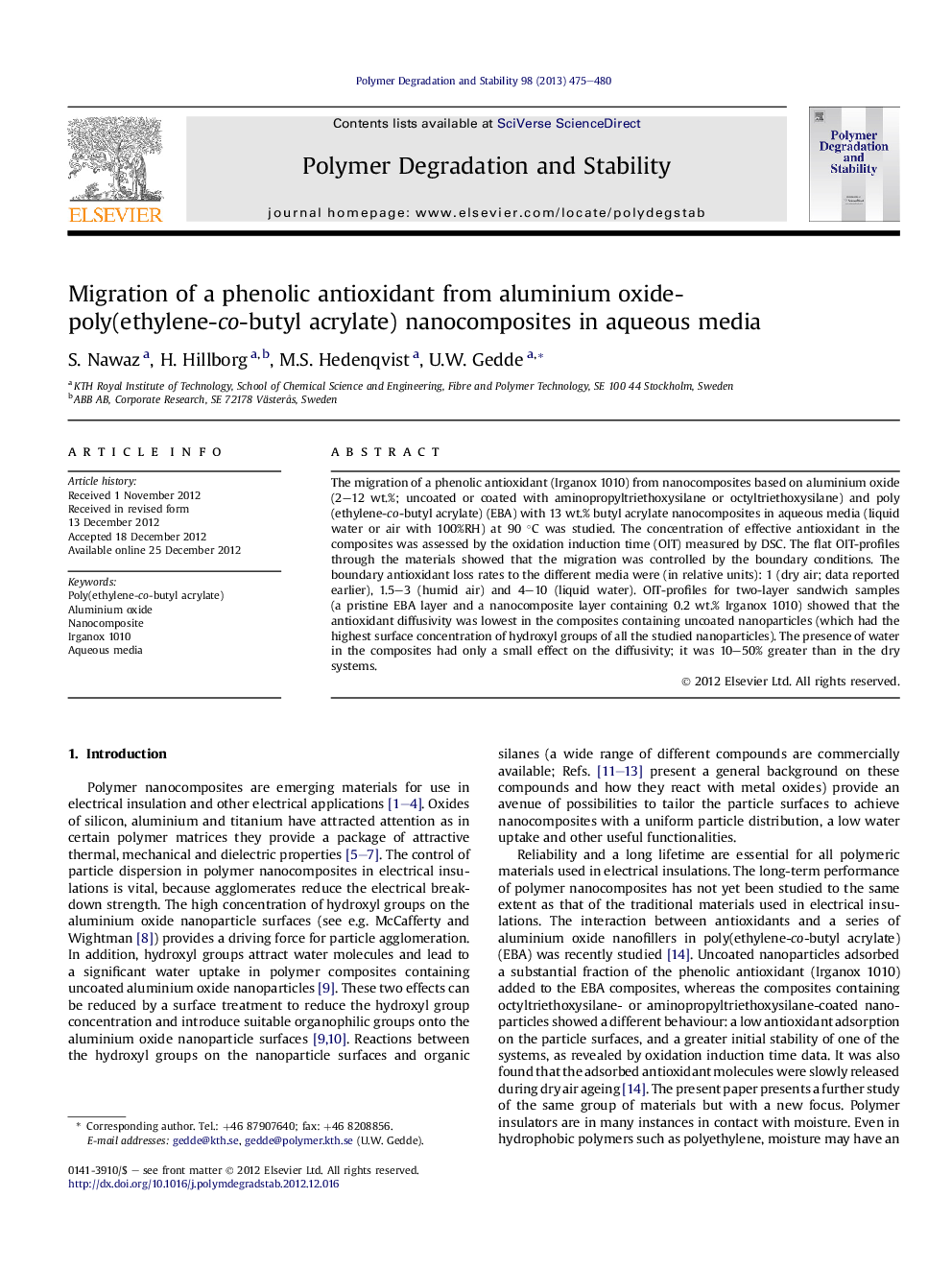| Article ID | Journal | Published Year | Pages | File Type |
|---|---|---|---|---|
| 5202384 | Polymer Degradation and Stability | 2013 | 6 Pages |
The migration of a phenolic antioxidant (Irganox 1010) from nanocomposites based on aluminium oxide (2-12 wt.%; uncoated or coated with aminopropyltriethoxysilane or octyltriethoxysilane) and poly(ethylene-co-butyl acrylate) (EBA) with 13 wt.% butyl acrylate nanocomposites in aqueous media (liquid water or air with 100%RH) at 90 °C was studied. The concentration of effective antioxidant in the composites was assessed by the oxidation induction time (OIT) measured by DSC. The flat OIT-profiles through the materials showed that the migration was controlled by the boundary conditions. The boundary antioxidant loss rates to the different media were (in relative units): 1 (dry air; data reported earlier), 1.5-3 (humid air) and 4-10 (liquid water). OIT-profiles for two-layer sandwich samples (a pristine EBA layer and a nanocomposite layer containing 0.2 wt.% Irganox 1010) showed that the antioxidant diffusivity was lowest in the composites containing uncoated nanoparticles (which had the highest surface concentration of hydroxyl groups of all the studied nanoparticles). The presence of water in the composites had only a small effect on the diffusivity; it was 10-50% greater than in the dry systems.
